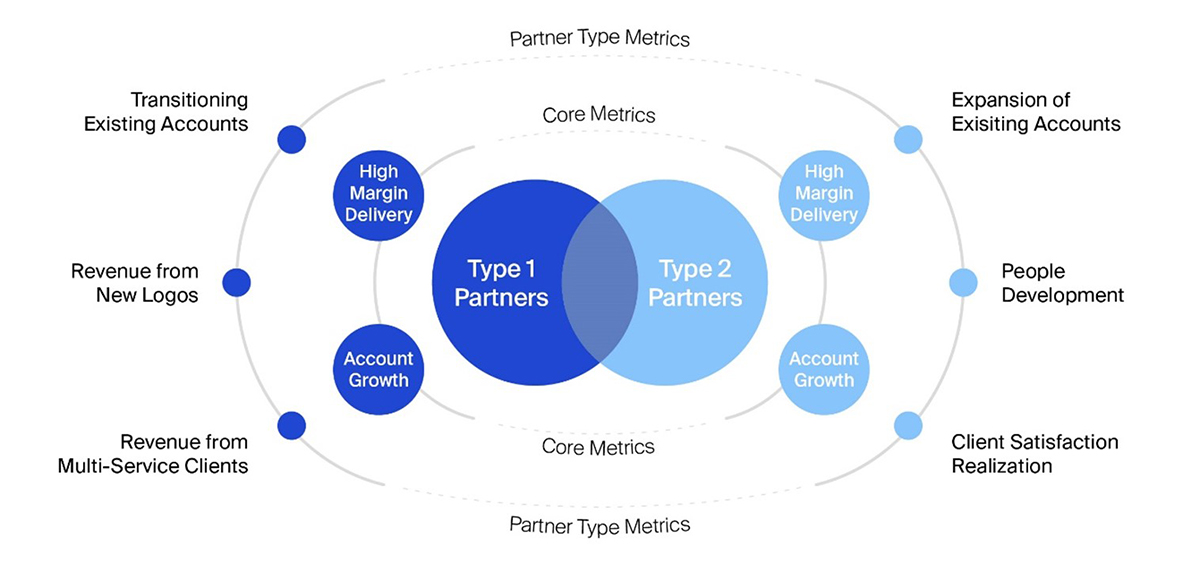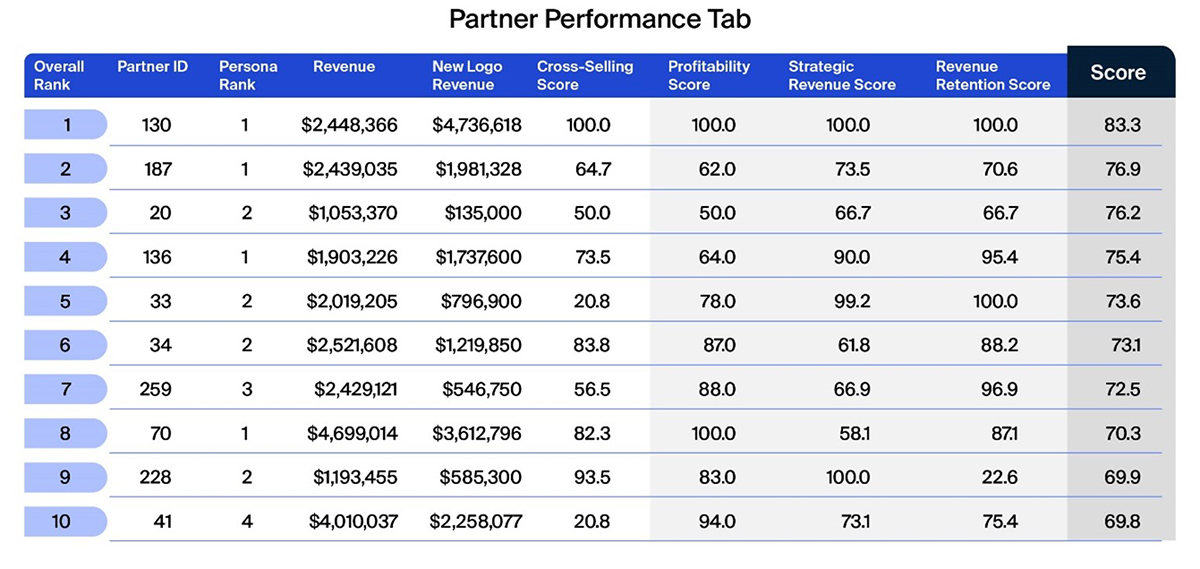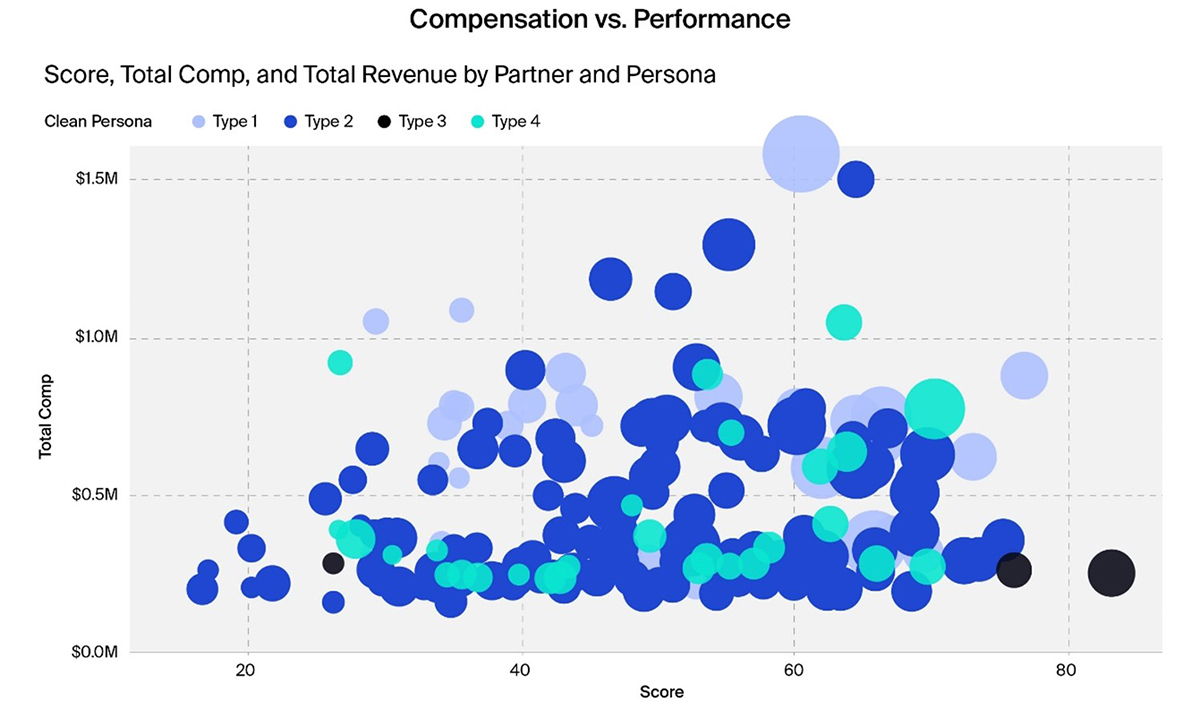To make the right choices, most firms follow a relatively laborious performance evaluation process. In addition to creating a massive time drain on the firm, the traditional methods to evaluate partner performance tend to be inadequate in several key areas because:
- Single year-end assessments leave partners without adequate information to make midyear adjustments.
- The subjective nature of qualitative measurement leaves room for individual and group biases.
- A single set of criteria for assessing all partners does not account for the simple fact that different partners perform vastly different roles for the firm.
In order to address these challenges, firms are increasingly turning to persona-based analytics to develop a more data-driven approach to partner compensation.
A DATA-DRIVEN APPROACH TO PARTNER COMPENSATION
Traditional methods of partner compensation typically rely on highly subjective factors like qualitative leadership ratings, people development contributions or revenue generation crediting. A data-driven approach provides a fairer, more objective assessment of partner performance. By evaluating partners based on key criteria that make sense for their individual roles and responsibilities, firms can ensure that compensation aligns with actual performance.
At most professional firms, we find two core types of partners:
- Type 1 (T1) partners who focus primarily on business development and acquiring new clients
- Type 2 (T2) partners whose main remit is sustaining and expanding existing relationships

Evaluating all partners against the same set of metrics is a recipe for mediocracy across the ranks. On the other hand, a compensation process that accounts for the nuances of every partner’s performance and abilities is ripe for individual bias and subjectivity.
There’s a solution that lies between these two extremes: using a set of core metrics on which all partners are evaluated that augments these universal known performance indicators (KPIs) with individualized partner-appropriate metrics tailored to promote desired behaviors.
HOW ARE MODEL RESULTS USED?
The main driver for adopting a data-driven approach to partner compensation is fairness. By basing compensation decisions on objective data and measurable performance metrics, companies can mitigate bias and ensure that partners receive compensation that accurately reflects their contributions.
Additionally, this approach promotes transparency by providing partners with a clear understanding of how their performance is assessed and rewarded. Clearly defined metrics and goals can provide partners, and their coaches, with the ability to better course correct during the year by checking in on their performance at any point in time.

 Overall partner performance scoring provides quick insights into the stack-ranking of partners on both core and partner-type metrics. The additional ability to zoom in on particular areas of performance across the partner population also allows for the identification of performance trends across the firm. A data-driven organization creates an environment where the compensation process is clearer, more efficient and more direct about partner expectations.
Overall partner performance scoring provides quick insights into the stack-ranking of partners on both core and partner-type metrics. The additional ability to zoom in on particular areas of performance across the partner population also allows for the identification of performance trends across the firm. A data-driven organization creates an environment where the compensation process is clearer, more efficient and more direct about partner expectations.
WHAT ARE THE BENEFITS OF THIS APPROACH?
Adopting a data-driven approach to performance scoring brings several benefits, including improved partner and firm performance, a fairer and more objective compensation system, enhanced transparency and trust, and even more effective onboarding and people development processes.
Let’s look at each of these.
1. Driving Higher Performance
Access to up-to-date data on partner performance allows coaches to provide detailed developmental feedback. Additionally, partners can keep tabs on how well they are tracking toward their goals.
2. Fair and Objective Compensation
By relying on data analytics, leadership avoids biases and ensures equitable compensation for partners. This fosters a sense of fairness, motivating partners to perform at their best and contribute to the firm’s overall success.
3. Enhanced Transparency and Trust
A data-driven approach provides partners with a clear understanding of the performance metrics used to evaluate their contributions. This transparency fosters trust and enables partners to proactively seek feedback and make improvements throughout the year.
4. More Effective Onboarding and Development
The data-driven approach facilitates the onboarding process for new partners by providing a clearer structure and outlining performance expectations. This ensures a smooth transition and helps new partners understand where they stand in terms of performance relative to their peers.
A data-driven approach to partner compensation is a progressive method that offers numerous benefits to both businesses and partners. By adopting this approach, firms can ensure fairness, transparency and individualized assessments. Furthermore, the use of data analytics allows for scenario modeling, aiding partners in setting realistic goals and making informed decisions. As companies continue to evolve their compensation practices, embracing a data-driven approach will be key to optimizing partner performance management.
